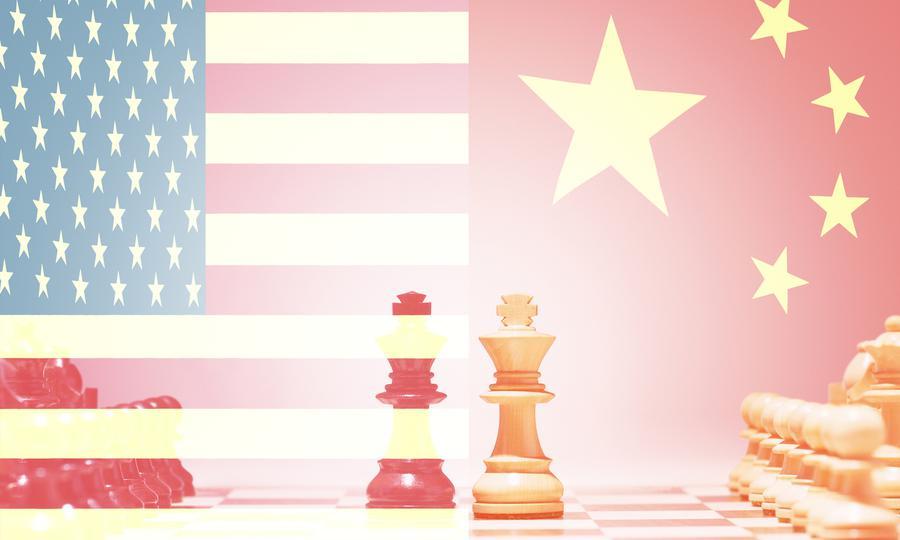Did The U.S. Just Concede Defeat In China Tech War?
Authored by David Goldman via AsiaTimes.com,
The Commerce Department has abandoned long-expected rules to tighten controls on US firms’ exports to Huawei, China’s national champion in broadband technology and the world leader in 5G Internet equipment. The Wall Street Journal this morning reported that the Defense Department blocked a long-signaled change in export rules that would forbid US companies from selling components to Huawei from foreign subsidiaries if 10% of the content is derived from US technology. The Treasury Department reportedly backed the Pentagon’s objections.
In related news, the United States has backed off from earlier threats to abandon a trade deal with Great Britain if Boris Johnson’s government allowed Huawei to build part of its 5G network, The Daily Telegraph reported on January 25. The United States has demanded that Britain exclude Huawei entirely in high-profile public statements. PM Johnson and President Donald Trump discussed the issue in a January 24 telephone call
In an apparent break from the previous US position, Treasury Secretary Steven Mnuchin told an audience at Britain’s Royal Institute of International Affairs on January 25 that the US might not oppose Huawei’s participation in some parts of Britain’s 5G network. Mnuchin said, “Which parts of the network it [Huawei 5G] goes into matters,” according to a tweet by the RIAA’s director Robin Niblett. “Is the Trump administration giving a sliver of manoeuvre to B Johnson?,” Niblett added.
Mnuchin’s declaration appears to echo the Johnson government’s position that the UK can manage any prospective security threat from Huawei as long as it is restricted to “non-core” parts of the 5G network. Last year, a study by British signals intelligence concluded that any prospective security problem with Huawei was manageable. A senior Huawei official told me,
“The Security Evaluation Centre Oversight Board looked at our source code exhaustively, and pointed out some ways we could improve. In fact, they did us an enormous favor by calling attention to less than perfect architecture. We made an enormous investment in improving the software and are confident that we will satisfy UK security concerns.”
US technology companies, especially chip designers, sell the great majority of their products in Asia. China’s chip design and manufacturing capacity is expanding rapidly with a blank check from Beijing, and US companies fear that Huawei and other Chinese companies will retaliate against US export controls with a price war for the high-end chips that power smartphones and servers. The Pentagon and Treasury objections to the proposed export controls indicate that the balance of power in the global chip industry has shifted towards China.
The Wall Street Journal reports:
“Commerce officials have withdrawn proposed regulations making it harder for US companies to sell to Huawei from their overseas facilities following objections from the Defense Department as well as the Treasury Department, people familiar with the matter said. The Pentagon is concerned that if US companies can’t continue to ship to Huawei, they will lose a key source of revenue – depriving them of money for research and development needed to maintain a technological edge, the people said.”
This appears to be an admission of defeat in the US-Chinese tech war, which in the long term is far more important than the trade war. China seeks to dominate what it calls the Fourth Industrial Revolution centered on 5G and artificial intelligence. China is investing massively in its “Made in China 2025” plan to leapfrog the West in high technology, while US support for basic R&D is barely half of its Reagan-era level in proportion to GDP.
In April 2018 the US banned chip exports to the Chinese handset manufacturer ZTE in retaliation for violation of Iran sanctions, shutting ZTE down until President Trump negotiated a massive fine in return for resumption of deliveries. Only four months later, in August 2018, Huawei announced its Kirin chipset for smartphones, claiming better performance than Qualcomm’s market-leading product. In December 2019 Huawei began shipping smartphones with no US components. It already had shipped 5G base stations in September 2019 with zero US components.
In May 2019, the Commerce Department placed Huawei on the “entity list,” requiring special licenses for US sales. As the Nikkei Asian Review reported in a December 2019 cover story, Huawei began “mobilizing Asian suppliers for a production surge,” leading “a split from US technology.” Taiwanese companies who for years had begged for Huawei’s business are now flooded with orders. Taiwan has the world’s best chip foundries, and Huawei depends heavily on Taiwan semiconductor manufacturing – for the moment. Meanwhile China has hired 3,000 Taiwanese chip engineers at double pay, to build chip foundries in the mainland.
Other US attempts to choke off Huawei’s access to chip technology have failed. The Chinese company uses chip design technology from Britain’s ARM, owned by Japan’s Softbank. In October, ARM announced that its exports to Huawei do not violate US content rules.
Despite the May 2019 export restrictions and Washington’s campaign to discourage Western countries from buying Huawei’s 5G technology, the Chinese giant boosted sales by 20% during 2019. In response to the failure of earlier efforts, the Commerce Department proposed to set the threshold for US content in offshore sales to Huawei at 10%, down from the present 25%.
A senior Huawei official told me that although the US restrictions are making life difficult for the company, China was moving rapidly towards self-sufficiency in the most advanced computer chips. That would do more than cut off US sales to China: It would enable China to undercut American companies in the global ship market. US chipmakers depend overwhelmingly on Asian sales.
Tyler Durden
Thu, 01/30/2020 – 23:00
via ZeroHedge News https://ift.tt/2OcnxxN Tyler Durden
